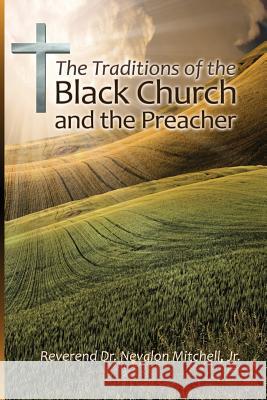The Traditions of the Black Church and the Preacher » książka
The Traditions of the Black Church and the Preacher
ISBN-13: 9780990925002 / Angielski / Miękka / 2016 / 126 str.
This book is an attempt to analyze the historic roles of the black church andthe black preacher in light of liberation theology of radical social involvement.The first chapter, "The Black Church and the Black Preacher: African Roots,underscores the various ways in which African religious traditions shaped andinformed the style and ethos of the black church, and the authority and artisticcreativity of the black preacher. Only fleeting attention has been given the blackpreacher in this regard. Some attention is devoted in this chapter to how theimage of Africa, as reflected in the early black church and the black preacher,contributed to a liberation theology that would find a strong intellectual charactercenturies later.Chapter two covers the different images of the black church and the black preacherduring slavery. It is called, "Spiritual and Artistic Forms: The Black Church andthe Black Preacher During Slavery." Emphasis is placed on how the black churchtranslated its liberation theology into practical reality through its roles as the "OldIsrael" and the "All-Comprehending Institution." The Churchs involvement inAbolitionists activity, the Underground Railroad, and other movements againstslavery and racism is regarded as an early expression of liberation theology. Thepreachers significance as a symbol of hope, a leader in the spiritual destiny of thefolk, an agent of protest, and a fashioner and exemplar of culture is also interpretedwithin this context.Chapter three begins with the immediate postbellum period and extends to thepresent, with a special focus on the implications of black church activism andblack preaching for contemporary liberation theology. The argument is that thechurch and preachers in the slave songs, sermons, tales, and other sources. Thischapter is entitled, "Beyond Slavery: The Black Church and the Black PreacherSince Slavery."The next chapter discusses black women in the ministry of the black church. Ittreats this as the most significant challenge confronting the black church withits strong tradition of a male-dominated leadership. The growing assertivenessof black women in the black church, and the extent to which gender issues arecurrently shaping black theology, is the central thrust of this chapter. It is called,"Extending the Tradition: Black Women and Ministry in the Black Church."This fourth chapter underscores the need for African-Americans to rethink thetraditions of the black church and the black preacher in light of issues that arecurrently being raised in the works of Delores Williams, Jacquelyn Grant, MarciaRiggs, and other womanist theologians.The fifth chapter is entitled, "Blazing New Paths: Challenges Confronting theBlack Church and Its Leadership in the Future." Here the stress is on the needfor new and more vital ministries and missions to address drug addiction, Aids,poverty, illiteracy, and other problems that are still negatively affecting the qualityof life in the African-American community.











